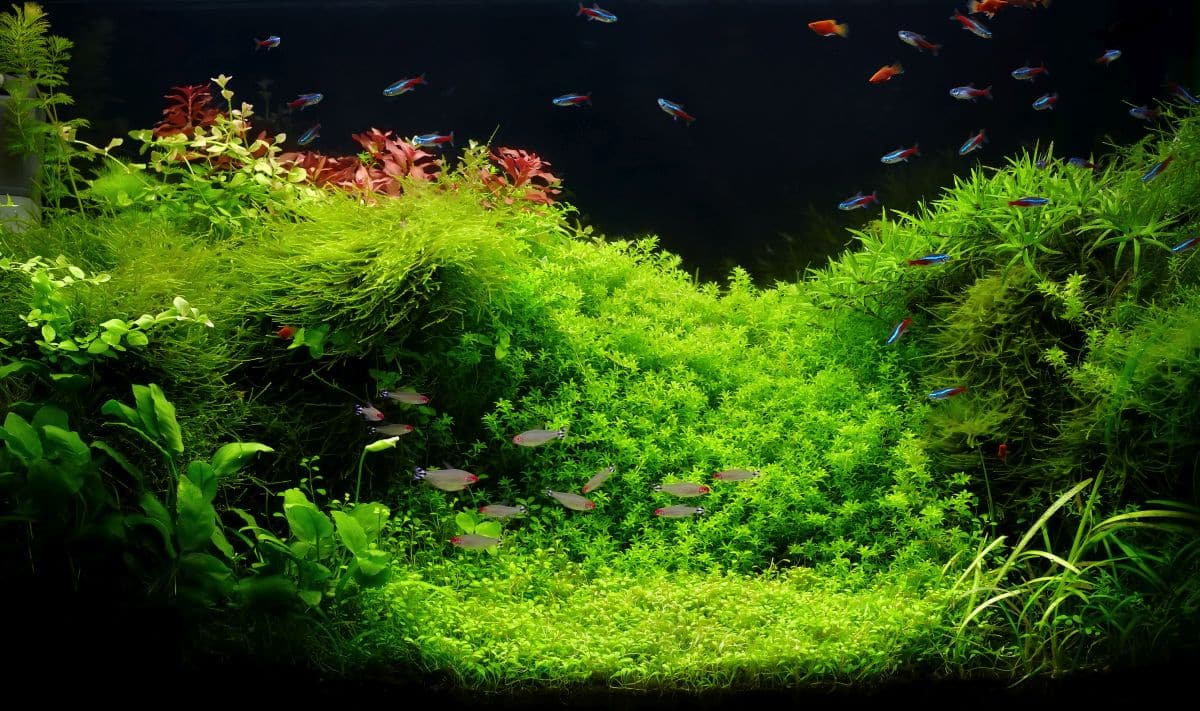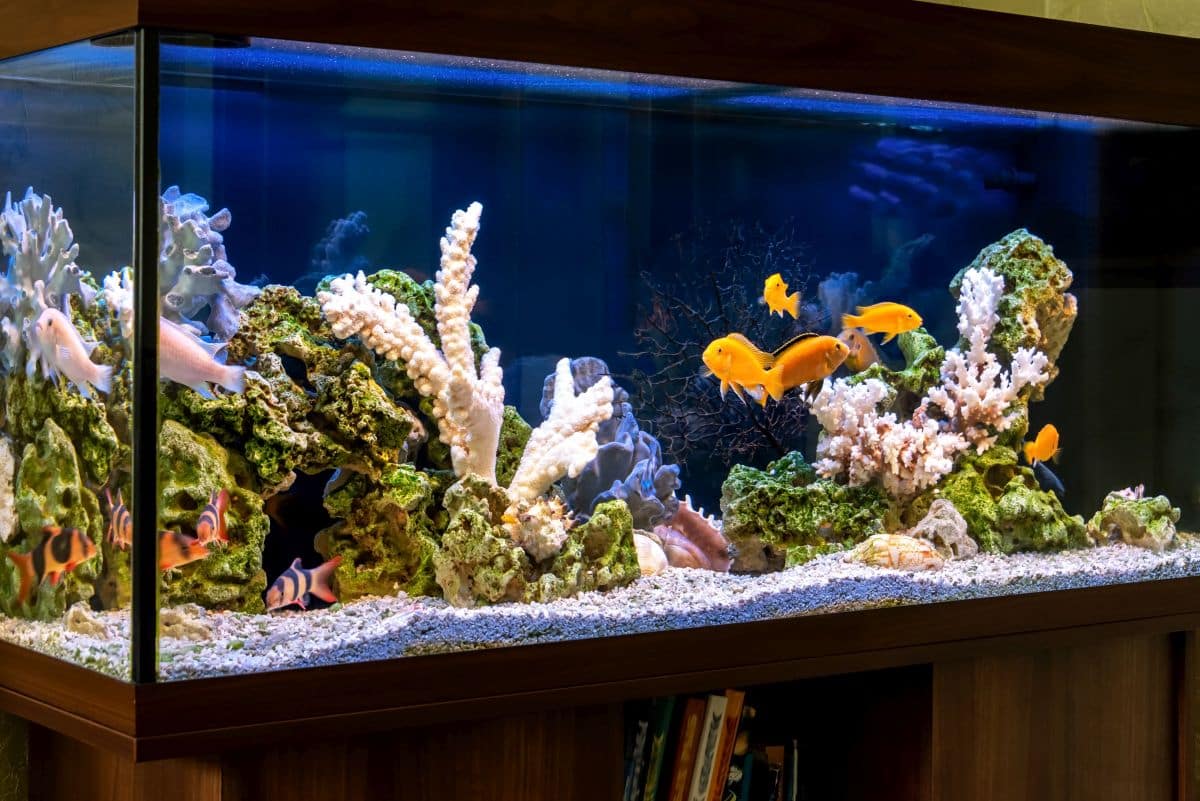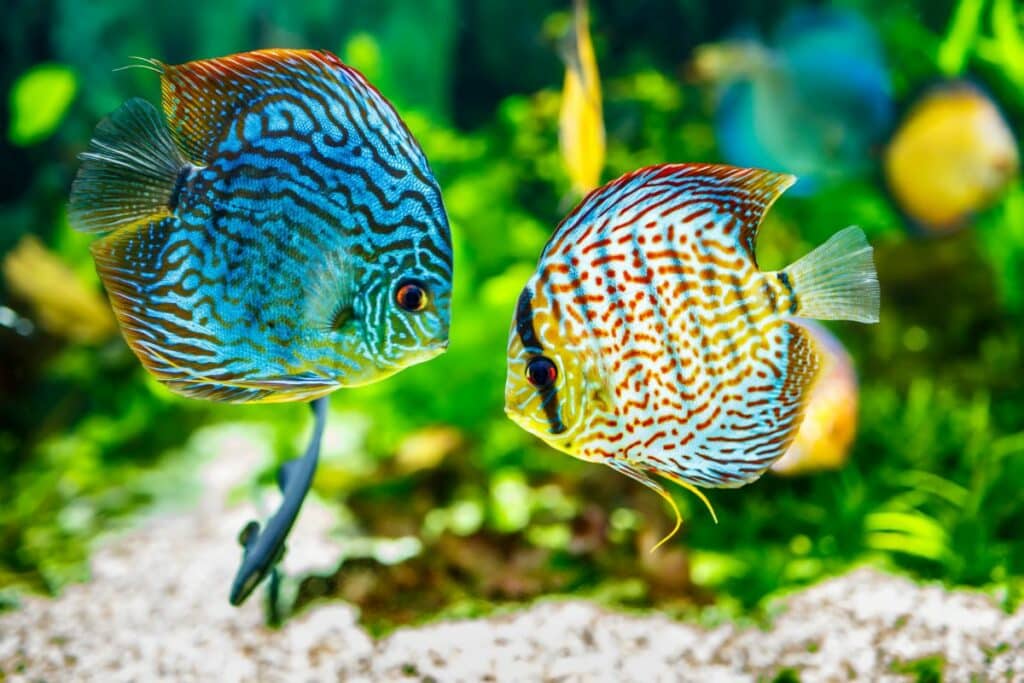the essentials in brief
Mulm is a brown, flaky coating that accumulates over time on the substrate, in the filter or in other places in the aquarium. It has an important function...
There are some fish species that feed on sludge or at least rummage through it and thus ensure better aeration of the substrate. Here you will be introduced to some fish species and other measures...
To avoid this, you should regularly vacuum up part of the sludge, for example with a hose or a special sludge vacuum cleaner.
Mulm is a common phenomenon in aquariums that can have both advantages and disadvantages. In this blog post you will learn exactly what Mulm is, which fish eat it and what you can do against it. We also give you some tips and hints on how to keep your aquarium sludge-free and healthy.
Why is sludge important in the aquarium?

Mulm is not only a waste product, but also an important part of the biological cycle in the aquarium. It provides habitat and food for many microorganisms, which in turn are responsible for breaking down pollutants such as ammonium, nitrite and nitrate. These bacteria are important for the water quality and the well-being of the fish.
Also contains Mulm Humic substances produced during the decomposition of plant matter. Humic substances have several positive effects on the aquarium water. They lower the pH value and water hardness, bind heavy metals and other toxins, promote plant growth and protect the fish's mucous membranes. In addition, humic substances give the water a natural brownish color that many fish are familiar with from their original habitats.
Additionally, Mulm serves as Nutrient storage for aquatic plants. It contains many minerals such as iron, potassium or phosphate that can be absorbed by the plants. The mulm thus ensures a continuous supply of nutrients to the plants.
How can you reduce mulm in the aquarium?
Although mulm has some advantages for the aquarium, it should not grow too much. Too much mud can also have negative consequences. It can impair the oxygen supply of the substrate and lead to anaerobic zones in which harmful bacteria can colonize. These bacteria produce toxic gases such as hydrogen sulfide or methane, which can leak into the water if the soil is disturbed.
Too much mulm can also cause you excess of nutrients lead in the water, which promotes the growth of algae. In addition, a heavily muddy substrate usually looks unaesthetic and impairs the appearance of the aquarium.
To reduce the mulm in the aquarium, there is various measuresthat you can grab. The most important are:
- Regular vacuuming of the sludge: Part of the mulm can be removed from the floor with a hose or a mulm vacuum cleaner. However, one should not proceed too thoroughly, otherwise the useful bacteria and humic substances will also be lost. A good guideline is to vacuum about 20 to 30 percent of the sludge per week. Vacuuming is best done during water changes to compensate for water and nutrient loss.
- Reduce feeding: One of the most common causes of too much muck is overfeeding the fish. Too much feed leads to more fish droppings and leftover food, which form the sludge. To avoid this, only feed as much as the fish can eat in a few minutes. A fasting day can also be inserted once a week to promote the digestion of the fish. In addition, high-quality feed that produces little waste should be used.
- Optimize filtering: A good filter is essential for a clean and healthy aquarium. Not only does it remove suspended solids from the water, but it also provides a large surface area for the colonization of nitrifying bacteria that break down ammonium and nitrite. The filter should be cleaned and maintained regularly to maintain its efficiency. However, not all filter media should be replaced at once or washed out too much, otherwise the bacterial culture will be destroyed.
- Flow Improvement: A sufficient flow in the aquarium ensures better mixing and oxygenation of the water. It also prevents sludge from accumulating in areas with little flow. The flow can be generated by a suitable placement of the pump, the air vent or by additional flow pumps. However, care should be taken that the current is not too strong as it can disturb fish or damage plants.
- Use of Mulmeaters: There are some species of fish that feed on mulm, or at least stir it up and disperse it. These fish can be a useful addition to the aquarium stock to reduce mulm. However, you should also note a few points:
- The fish have to match the rest of the trimmings, both in terms of water parameters and behavior. Not all fish get along with each other or have the same requirements in terms of temperature, pH value or hardness.
- In order to feel good and live out their natural behavior, the fish have to enough space in the aquarium have. So you shouldn't use too many or too big fish to fight the mulm.
- Despite their preference for mulm, the fish have to get other food tooto stay healthy and vital. So you shouldn't do without regularly providing them with suitable food.
Tip: Among the most popular and proven Mulmfressern belong Mailed catfish (Corydoras), catfish (Ancistrus), loaches (Botia) and cichlids (Cichlidae). These fish come in a variety of species and colors and not only enrich the aquarium with their function as mulmeaters, but also with their interesting appearance and behavior.
How can you prevent mulm in the aquarium?

In addition to reducing the existing mulm, it is also important to prevent new mulm from forming. You can do that take the following measures:
- Choice of plants: On the one hand, the plants in the aquarium are useful for the nutrient cycle and the aquarium climate, on the other hand they can also contribute to the formation of sludge if they die or are cut off. To avoid this, you should choose robust and easy-care plants that are well adapted to the water parameters and lighting. One should also ensure that plants do not grow too dense or get too tall to ensure good flow and visibility.
- Cleaning the decoration: Decorations in the aquarium, such as stones, roots or caves, can also attract or hide mulm. To avoid this, you should clean the decoration regularly by taking it out of the aquarium and rinsing it with clear water. However, you should not use soap or other cleaning agents, as these are harmful to the aquarium.
- Use of mulm preventers: There are some products on the market that promise to prevent or reduce mulm formation in the aquarium. These products usually contain enzymes or bacteria that are supposed to accelerate the breakdown of organic waste. However, the effectiveness and tolerability of these products is controversial and can vary from aquarium to aquarium. You should therefore be well informed before use and follow the dosage exactly.
Note: Mulm preventers are not a substitute for good aquarium care. They can only be used as a supplement to keep the mulm under control.
Mulm: A natural component with advantages and disadvantages
Mulm in the aquarium is not only a problem, but also an important part of the ecosystem. It can have both positive and negative effects on aquarium life and therefore must in a healthy balance being held. With the right measures, mulm in the aquarium can be reduced, prevented and used.


